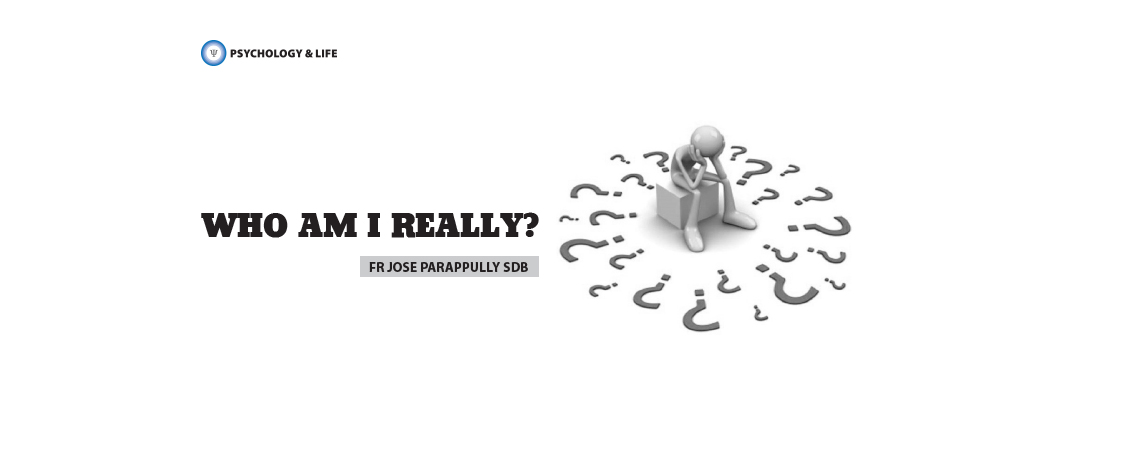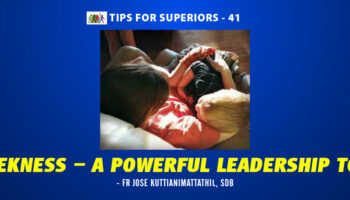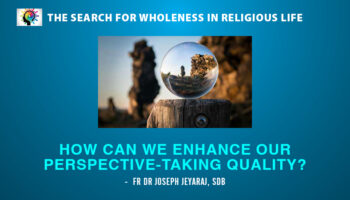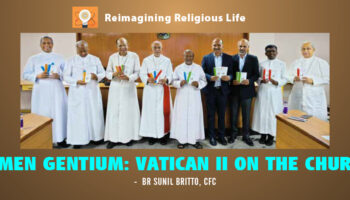“Who am I really?” This is a question all of us ask ourselves sometime in our life. Some of us find an answer, others continue to keep asking the question. Jesus was asked this question, and He asked his close friends who they thought He was.
Emotionally healthy persons tend to have clear and convincing answers to the question “Who am I?”
In psychoanalyst Erik Erikson’s developmental schema, “identity formation” is the crucial task to be accomplished during adolescence. But we can struggle with issues of identity all through life.
Personality psychologist Dan McAdams presented identity as an evolving story that integrates a reconstructed past, a perceived present, and an anticipated future into a coherent and vitalising life myth. Our personal life myth “is a special kind of story that each of us naturally constructs to bring together the different parts of ourselves and our lives into a purposeful and meaningful whole.” In other words, when we achieve identity, we are able to bring together all of our past experiences, current realities and future goals and aspirations to create a picture of who we are and who we want to be.
Erikson described three significant ways in which identity formation can fail. These are identity foreclosure, identity confusion and negative identity. It is useful to understand these failures.
FORECLOSED IDENTITY
Identity foreclosure is a premature (without much reflection or soul-searching) resolution of the identity issue. We can slip easily into a role expected of us by family or community. We may not in any way identify with this role or find it meaningful. But the internalisation of the expectation of others, a process which is often unconscious, pushes us into identity foreclosure. A sense of dissatisfaction and lack of fulfilment, often with no knowledge of its source, is the result.
This was the case of Fr. Conrad. He grew up in a very religious family. His father had wanted to be a priest. But family circumstances demanded that he put aside that dream. However, he wanted to relive that dream though his son. In both subtle and overt ways, he encouraged Conrad to pursue an ecclesiastical career, even though what
Conrad really wanted was to pursue a career in finance. Five years after his ordination Conrad left the priesthood and joined an insurance company and later moved into a banking career.
NEGATIVE IDENTITY
A negative identity develops when we conform to an image of us that is contrary to family or cultural ideals but which is projected on to us by the same family or community. For example, the family may not approve the way we are living or of our life choices and label us as the “black sheep” of the family. In such a situation we may strive hard to prove the family right by living up to that negative label, adopting and engaging more and more in behaviours that are socially disapproved. Or, while in school, a teacher might ridicule us describing us as “good for nothing.” We might then adopt behaviours that fit the label and really turn out to be a good for nothing. We sabotage our own welfare and happiness and hurt ourselves by going out of our way to prove our detractors right.
Negative identity can develop also from idealisation of or identification with someone devalued by family or community but who we idealise. For example, in our childhood or youth we may have idealised an uncle or an aunt whom we loved very much and wanted to be like. It happened that this beloved uncle or aunt was also an alcoholic. As we grow up we may also identify with our uncle’s or aunt’s alcoholism and ourselves become alcoholic.
IDENTITY CONFUSION
Identity confusion occurs when we are unable to make up our minds as to who we are or who we want to be. We are unable to make a commitment to any single view of ourselves. This may be because we are caught up in conflicting values or lack the confidence to make meaningful and lasting decisions. Young religious who are unable to decide if they want to make their perpetual profession or not, provide a relevant example. They keep postponing a decision.

ACHIEVED IDENTITY
A healthy and positive resolution of the task of identity formation leads to identity achievement. The pathway to identity achievement is through role experimentation. Erikson termed this period of free experimentation of various roles and identities before a final identity is achieved psycho-social moratorium. Before we make a final choice of what we want to be, we need to look carefully at and even experiment with various options by living them out for a period—in fantasy or reality. We have to do some real soul-searching about who we want to be and what we want to do, and then make definitive choices.
According to Erikson, identity achievement moves us toward becoming and functioning as well-adjusted adults, with a fine balance of love and work—forming healthy relationships and engaging in meaningful and constructive activities. We become creative and productive, and contribute to the welfare of society.
IDENTITY AND FORMATION
It is quite likely that many candidates to religious and priestly life, especially those who joined as adolescents, are in identity foreclosed status. They may not have given enough attention to role experimentation. One of the important tasks of formation is to provide them opportunities for such experimentation, and not just to help them confirm the choices they have made, perhaps prematurely.
Sometimes we come across priests and religious who do not seem to have any opinion of their own. In answering questions, or when asked for an opinion, they tend to quote a document or the words of a superior. Lack of an opinion of our own or over-reliance on the opinion or expertise of others is often a symptom of a lack of a strong sense of identity.
LIFE-LONG PROCESS
Although Erikson postulated that identity formation is something that happens in adolescence, recent theory and research show that individuals engage in a lifelong process of identity formation. Thus, even if we have had a strong sense of achieved identity for a considerable period of our lives, we can still shift back into identity confusion, often triggered by new and unexpected experiences or developments in our lives. Such falling back is a positive thing, because we can now do further soul-searching and re-confirm our identity or choose a new one and move toward a deeper level of identity achievement. For example, a priest or religious who falls in love in mid-life, may move into identity confusion, even if he or she had achieved a clear sense of identity earlier. Such falling in love leads him or her to ask some fundamental questions about who they want to be. A decision made after struggling with these questions can strengthen and consolidate one’s identity or help choose a new identity that seems more in keeping with one’s deepest desires.
KNOW YOUR DEEP LONGINGS
We develop a deeper sense of our identity when we take time to confront ourselves. Such deeper sense of identity does not come from the external realities or the roles we play. It comes from recognising our deepest desires and longings and the dynamics operating behind our conscious selves.
Such an encounter with our deeper self occurs only in the depths of solitude. One of the areas candidates to religious life and priesthood have to be trained in is precisely this. They have to be trained to immerse themselves in and be comfortable with consciously and deliberately chosen solitude, especially in this age of instant communications and easily available media distractions, so that they can encounter themselves in greater depth and honesty. Creating an ambience conducive to such solitude is an important task of religious and priestly formation.
For Reflection
- Have I struggled with issues of identity? If yes, in what way?
- What is my current identity status: foreclosed, negative, confused, or achieved? What makes me conclude this?
- Am I in touch with my deepest longings?
- Do I see the value of solitude and use it to know myself more in depth?

To subscribe to the magazine Contact Us





